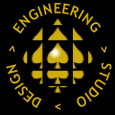EasyEDA Home Page
RSGC ACES EAGLE Libraries: ACES_THT.lbr, ACES_SMT.lbr
Schematic Design Tips
- Follow a meaningful convention for naming your projects. Include either TH or SM in the name and the version number if applicable.
- Be aware of the units of measure at all times. Start with mm.
- Use the LCSC Library where possible for Through Hole PCB designs as it the most extensive. For assembled Surface Mount PCB Designs start the JLCPCB Assembled Library. Save the Common Library for VCC and GND.
- Know and select the correct part. This takes times and patience. The JLCPCB and LCSC parts libraries are extensive. I've had good luck simply entering the Manufacturers' part numbers obtained from the Digikey online inventory. For example, consider resistors. There are thousands of choices. For the 5.1 kΩ fixed resistor for the R2R DAC project, I simply entered the manufacturer's product number MFR-25FTE52-5K1 and up it came.
- Do your best to decode the cryptic part descriptions. In particular, confirm the pitch (distance between pads) and the overall dimensions (Length and Width)
Board Design Tips
 Be aware of the units of measure at all times. Use mm.
Be aware of the units of measure at all times. Use mm.- Position the bottom left corner of the Board Outline at the origin (0,0).
- Consider the space occupied by the four corner mounting holes (3.2mm diameter). Offset them 5-6 mm from their repective corners.
- When placing parts, keep in mind their accessibility from the user's perspective, access to power, your eventual case design and other external influences and components. Remember the head of the M3 acrews extend slightly beyond the hole.
- For overhanging parts, keep in mind the wall thickness of your eventual case.
- When routing, try hand routing first to get a feel for the process. Use a trace width between 0.5 and 0.7 mm for starters. Go as high as 1 mm for the supply (VCC and GND) traces.
- Avoid right angles in your traces where at all possible.
- Be generous (and consistent) with your Text on the Top Silk Layer. Be sure to put your name and the version number on your PCB.
- A border on the TopSilkLayer, offset slightly from the perimeter, adds a sense of craftsmanship. I often place a solid rectangle on the BottomSilkLayer for notes.
- If I supply you with at least one part for your assembled PCB, please add the DES logo above right to the TopSilkLayer (scaling to 8 mm × 8 mm is sufficient)
 Be aware of the units of measure at all times. Use mm.
Be aware of the units of measure at all times. Use mm. Be aware of the units of measure at all times. Use mm.
Be aware of the units of measure at all times. Use mm.